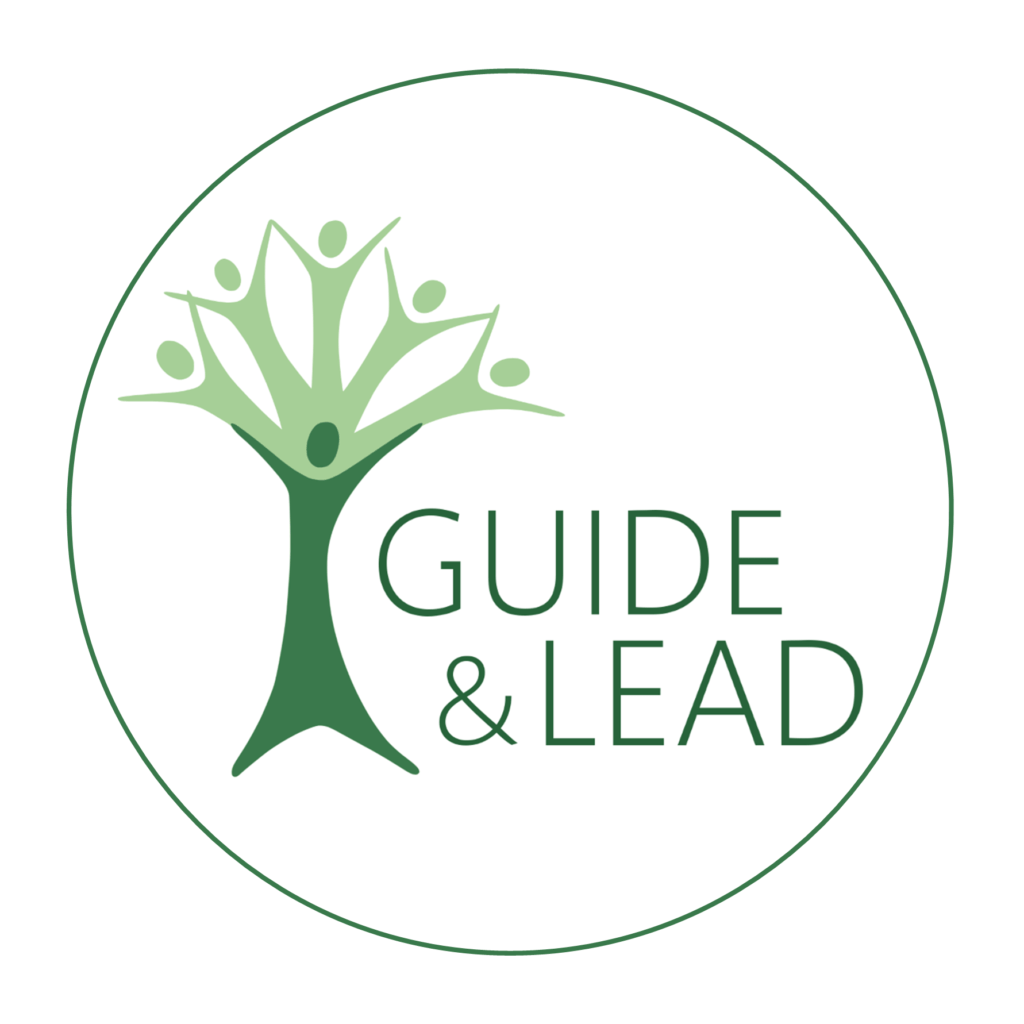Ruptures
Somehow, the whole of life seems full of them. Chapters that don’t just come to an end and gently peter out, but for whatever reason come to a hard stop or cut.
Privately and professionally.
What remains is the self, alone and thrown back on itself.
What also remains is how to deal with this change? What is left of me in this situation? What can I rely on, what still gives me support? And above all, what do I want to keep and what can I let go of at this moment?
Quite a few of our clients at Guide and Lead tell us that they feel these stark changes have been happening much more frequently and often much more drastically in recent years, and that this has always brought about an awareness of ‘standing alone in the battle’.
The possibilities that present themselves precisely in this situation are often only visible in a second step. In the first moment, a simple survival mode often switches on. A mode that often enough involves clinging to things that one actually knows have long since been lost. And a mode that seems to question everything without leaving anything left.
Not uncommon is the pressure from outside to ‘get a grip’ on everything again as quickly as possible, to function, to ‘pull oneself together’, not to ‘give up’, to ‘keep at it’, to ‘be strong’. Just as if one would fail, when that might not be the case.

Transformation, which is not just change, needs space.... and time.
Of course, it is far too simplistic to just say that ruptures provide an opportunity for change, perhaps indicating that this change may have been a long time coming. After all, there are also moments that make it necessary to resist and perhaps to come over the one or other rupture with a daring leap to the other side.
What life ruptures have in common, however, is that they give us the chance to question things and to consciously pause and look at whether what is happening is still in harmony with our own values, our own vision of life and our own purpose in life.
And, of course, in connection with this, also to look at who is still really reliably standing by our side in this rupture. Not necessarily to rely on them, but also to know who really supports our own visions and values and is not afraid to back them up even in challenging situations.
Such a process can take time and really take up a lot of space.
And yet we see again and again that especially the reference systems, professional or private, benefit immensely when these reflections are approached consciously.
Self-leadership and ruptures
Especially during the recent times of crisis, which have hardly passed anyone by, we have learned that some people seem to find it easier than others to deal with such challenges. People have shown their resilience, their agility and also how truly solid their foundation of values, vision and purpose in life is.
In most cases, it was precisely those people who did not wait until a crisis situation or the sudden rupture of a chapter in their lives to take a close look at what it really is that drives them.
They are people who do this regularly. And consciously tread their steps.
Vision
To go through life without a vision also means to leave one’s own goal setting to others.
When I listen to the children aged about 8-11 in our schools, almost every one of them has a fairly clear vision of their life. It doesn’t even matter if it’s about being a firefighter or a ‘YouTube star’, but rather the ability to dream up an idea of themselves in progression. It is also not important whether this is realistic or appropriate. Because what is realistic or unrealistic today?
Unfortunately, children lose this simple way of having visions quite quickly or it is lost to them. What remains is often a smile about the dreams they used to have. And also a little regret about how far one has perhaps strayed from these dreams.
Adults, however, who have visions and are aware of them, have a completely different self-efficacy. They have a higher goal, something to align themselves with, a north star. They can act and don’t have to just react every time. They are more agile and much more resilient in a situation of ruptures.
But what constitutes such a sustainable vision?
We understand a vision here as the ‘how’, i.e. the actual strategic implementation of the purpose of life. Where the purpose of life answers the why, the vision sets a direction for the how.
The following self-reflections are particularly intriguing:
I know…
- what my basic values and demands on myself and others are,
- what I want to achieve,
- who I want to touch,
- where I want to have an impact,
- what my strengths are,
- where I want to learn,
- what touches me,
- what triggers me,
- with whom and in which environment I feel most comfortable.
The clearer the vision is, the easier and more agile it will be to deal with it in crisis situations or times of ruptures, because the direction remains the same and you can always compare yourself with this vision with regard to possibilities, whether the upcoming decisions are in line with the vision, the purpose of life and your own values.

Consciously enter into the pain of ruptures
All ruptures hurt in one way or another, whether we admit it, open up vulnerably authentically about it or not. It hurts because it forces us to let go of things or people and because coming to terms with ourselves is also simply painful.
So a resulting protective reflex or flight instinct is quite normal.
It is also apparently so much easier for those around you to bear if you move out of it as quickly as possible and also allow them to help you. In this way, pain is quickly numbed and ruptures, even if they are accompanied by deep injury, are covered up quite quickly.
An ideal world spectacle that works often enough.
And yet, pausing and consciously acknowledging the pain also allows for deep healing, real learning and personal growth.
Having strong emotional language skills helps to support this growth:
- What feelings are moving me right now?
- Which of my needs have not been answered right now?
- What thoughts do I have about circumstances or others?
- Which of my narratives have been triggered in the situation and why?
Answering these questions actually even helps when looking back at a crisis situation that has already been resolved. It is not about judging oneself for feeling ‘wrong’, but rather about the actual TRUE perception. A perception that allows one to consciously change narratives and attributions of feelings and not feel at their mercy. And also – with a little distance – to consciously ascribe less importance to some things.
In the end, what we perceive as a rupture is often not perceived as such by others. This change of perspective often helps us to learn and grow in a positive way.
Not alone in ruptures
Guide and Lead offers not only guidance through the various ruptures in life, but also an intensive coaching program to develop the resilience that enables agility in crisis situations.
We support looking closely at which narratives are active, which triggers work in which way and what a vision based on values and meaning in life can really look like.
We would love to know which strategies have worked for you in crisis situations and where you would see yourself in terms of self-leadership in these situations?


